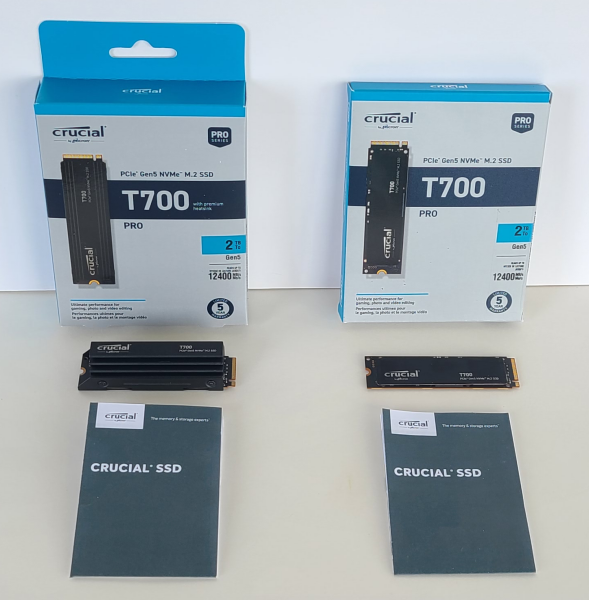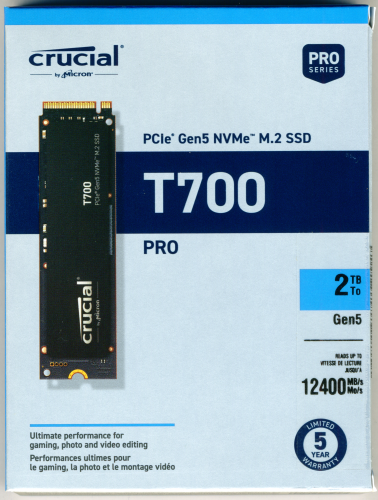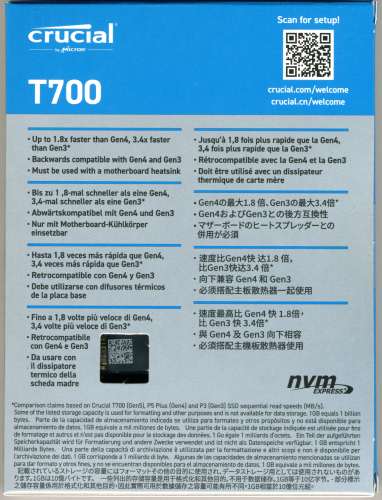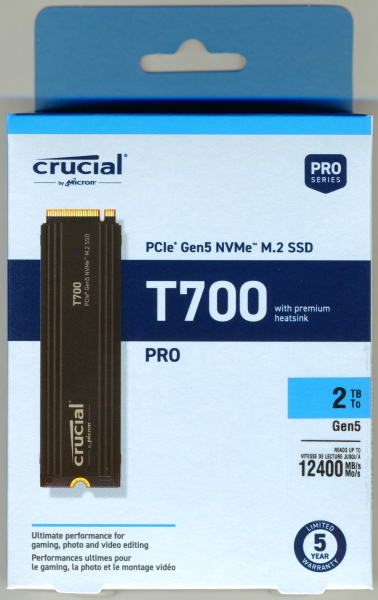Both versions of the T700 come in small, blue and white boxes. Along with a picture of the drive, the packaging advertises a number of its key features including its 2TB capacity, support for PCIe 4.0 NVMe technology, maximum read speed and 5 year warranty.
Inside the box, you'll find the T700 as well as a small guide with information on where you can get additional help and download the migration and cloning software.

Physical Features:
The T700 uses the 2280 form factor for M.2 (NGFF) SSDs. The heatsink-less version measures 22 x 80 x 3.3 mm and tips the scales at around 9g. The drive also has an "M key" edge connector which provides PCIe SSDs with up to 4x lanes of bandwidth.

The T700 is one of the first drives to use Phison's new PS5026-E26 controller. Manufactured using TSMC 12nm process technology, this PCIe 5.0 x4 NVMe 2.0 controller is equipped with two ARM Cortex R5 cores and has 8 NAND channels with 32 chip enables (CE) per channel. The E26 also offers support for 3D TLC/QLC NAND flash and features end-to-end data path protection, thermal throttling, SmartECC technology and Phison's fifth generation low-density parity-check (LDPC) ECC algorithm for improved drive reliability.

For the 2TB version of the T700, Crucial opted to use Micron's 232-Layer B58R 3D TLC NAND flash. If you'd remove the stickers, you'd see that there are two 512GB NAND flash packages on either side the PCB. The drive also has a single 2GB Micron LPDDR4 DRAM chip that is used for caching.


If your motherboard doesn't come with one, you can also get the T700 with a heatsink. This heatsink wraps entirely around the drive and is attached using hex screws. While this ensures a solid fit, it also adds to the overall width of the drive. Compared to the heatsink-less T700, this one is about 1mm wider. This doesn't sound like much. However, you will want to make sure that the card doesn't hit a PCI slot or any of the other components on your motherboard. With the heatsink's increased height (about 18mm), you'll also want to be careful that it doesn't interfere with your video card if your motherboard's M.2 slot is below it.






